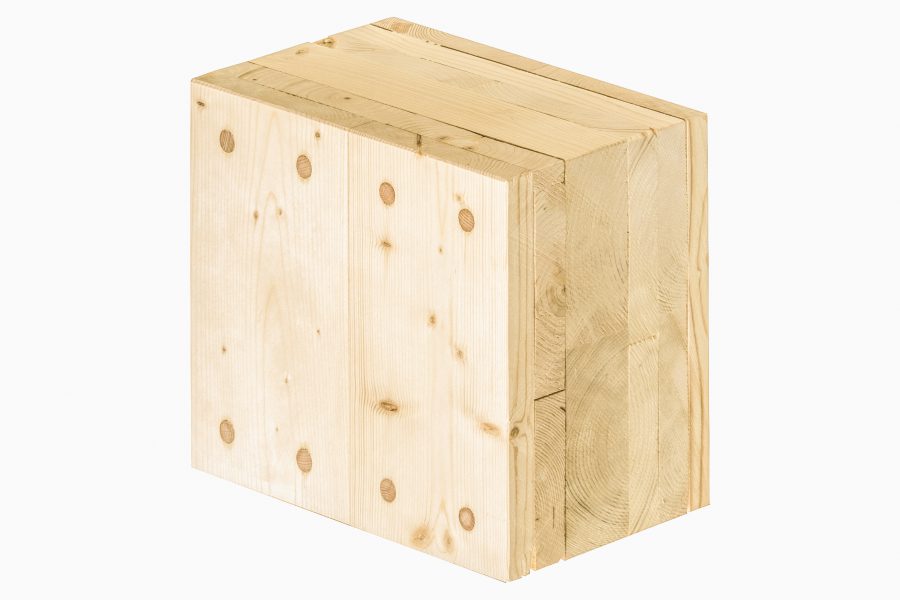|
Communication by semiochemical substances represents only one type among many for trees. In his life’s journey, Dr. Erwin Thoma met another outstanding forester, Mr. Peter Wohlleben, whose books are also available in English. He made a surprising discovery about forests. As it turns out, communication methods between trees are incredibly complex. For example, trees recognize the saliva of various animals. Recent research by Leipzig University shows that when a deer bites a twig, the tree responds differently than when a person breaks it. Trees react to the saliva of caterpillars in yet another way. For example, oaks give off a special smell signal then, in the form of a semiochemical substance, thus calling predators such as hymenoptera bees for help. These lay eggs in the leaf-devouring caterpillars and as a result, the caterpillars get devoured from the inside by the newly hatched eggs. Trees also communicate through their root systems called the wood wide web. It serves to convey warnings to its neighboring trees so that they could get ready for danger, such as insect attacks or drought. These signals are transmitted, as those in our nervous system, through electrical impulses and chemical substances. Where the roots of the trees do not reach, the information is transmitted through the connected mycelium network. Trees pay their "helpers" back by providing them with sugar. Mycelia are the largest living organisms on the Earth. Their size reaches thousands of acres, and some scientists claim that all mycelia on the Earth are connected. When trees at the bottom of the slope begin to feel the lack of water due to the drought, they inform other trees. These close their pores, thereby reducing water loss and slowing down photosynthesis. When one tree is attacked by wood borers, all trees within 50 meters change production to defensive substances. In our common larch, one of these substances is resin. It contains about 1000 complex chemicals and is the world's best natural fungicide, bactericidal and virucidal agent. Some trees can live more than 1000 years thanks to it. The ointment made from resin beats any pharmaceuticals that accelerate wound healing; however, it will never hit the market or doctors' offices, because its synthesis and patenting will probably never be possible, and pharmaceutical companies will not be able to make any money on it. This was stated by Professor Max Moser, who was mentioned earlier, and who was asked by Dr. Thoma to analyze the miracle wound ointment prepared by his grandmother. As a side fact, the same applies to Indian cannabis, which contains almost 445 unexplored compounds and is a cure for dozens of diseases, including cancer, as shown by the latest research in Germany and Israel, among others.
Hotel Seiser Alm of the Urthaler family is the largest wooden hotel in Europe with 45 family suites. Timber necessary for its construction was produced by the Austrian forest in an hour and a half. The forest not only has a healing effect on people, but it is also a system of exemplary economy. Forestry and economics are two academic areas of science which teach things that are completely the opposite. While we profit by exponential growth and elimination of competition is the only goal for the economy, the forest is based on cooperation to create the best conditions for the next generation. These are terms foreign to economists. Trees compete with each other only at the beginning of their careers, but they do not try to grow indefinitely and seize all resources for themselves. When a tree dies, it returns each of its particles to where it came from. It leaves no waste in the wake of its life. Waste doesn’t exist nor is created. The only thing that exists is the circuit and cycle of its life. According to Dr. Thoma, this model is the only one we humans may model a sustainable economy on. There is no alternative. Dr. Thoma's computerized and robotized factory draws all the energy from photovoltaics and the surplus is returned to the grid. It manufactures without waste, from material that is created from carbon dioxide. Dr. Thoma claims that any economy or energy crisis is nonsense. The only crisis in the world is the crisis of our minds. We lack nothing other than the right concept for our economy. Today's furniture is made of particleboards glued together with chlorine derivatives and formaldehyde resins. They are extremely harmful to health and nature, and are classified as hazardous waste for the purpose of their disposal. Their disposal is more expensive than the purchase of solid wood of the same weight. However, it is a billion dollar industry supported by lobbyists and politicians. Humankind debates global warming caused by carbon dioxide, when one tree may neutralize tons of carbon out of the atmosphere. Instead of building waste-free wooden houses, we insulate them with styrofoam, which besides mildew offers minimal effects, and when soiled with plaster is almost impossible to dispose of. We burn carbon, gas, and oil to heat and cool buildings, when a few photovoltaic batteries can deliver more power to a wooden building than it needs. It is now the ideal time to start thinking differently. As you can see from Dr. Thoma's example, sometimes one man's perseverance is sufficient to initiate small, big changes in the world.
0 Comments
Leave a Reply. |
AuthorHolz100 Canada Inc. Archives
July 2019
Categories
All
|
HoursMon - Fri.
9:30am - 4:30pm |
Office |
President FRANK GHAHREMANI(416) 725-6747
|





 RSS Feed
RSS Feed


